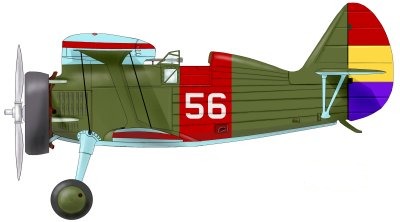FLYBOYJ
"THE GREAT GAZOO"
J'ai lu "Some Still Live" du pilote mercenaire Frank Tinker. Il était dans un escadron (1ère Escuadrilla de Chatos) commandé par Andrés García La Calle. D'après ce que je comprends, García La Calle est finalement devenu le commandant des opérations de combat républicain. À la fin de la guerre, García La Calle a envoyé un lot d'I-16 (et peut-être d'autres chasseurs) en France (pour éviter qu'ils ne tombent entre les mains des nationalistes) où lui et ses collègues pilotes ont été arrêtés (c'est une autre histoire). Quelqu'un a-t-il des informations supplémentaires à ce sujet, des photos de l'avion confisqué, de leur disparition définitive ?




